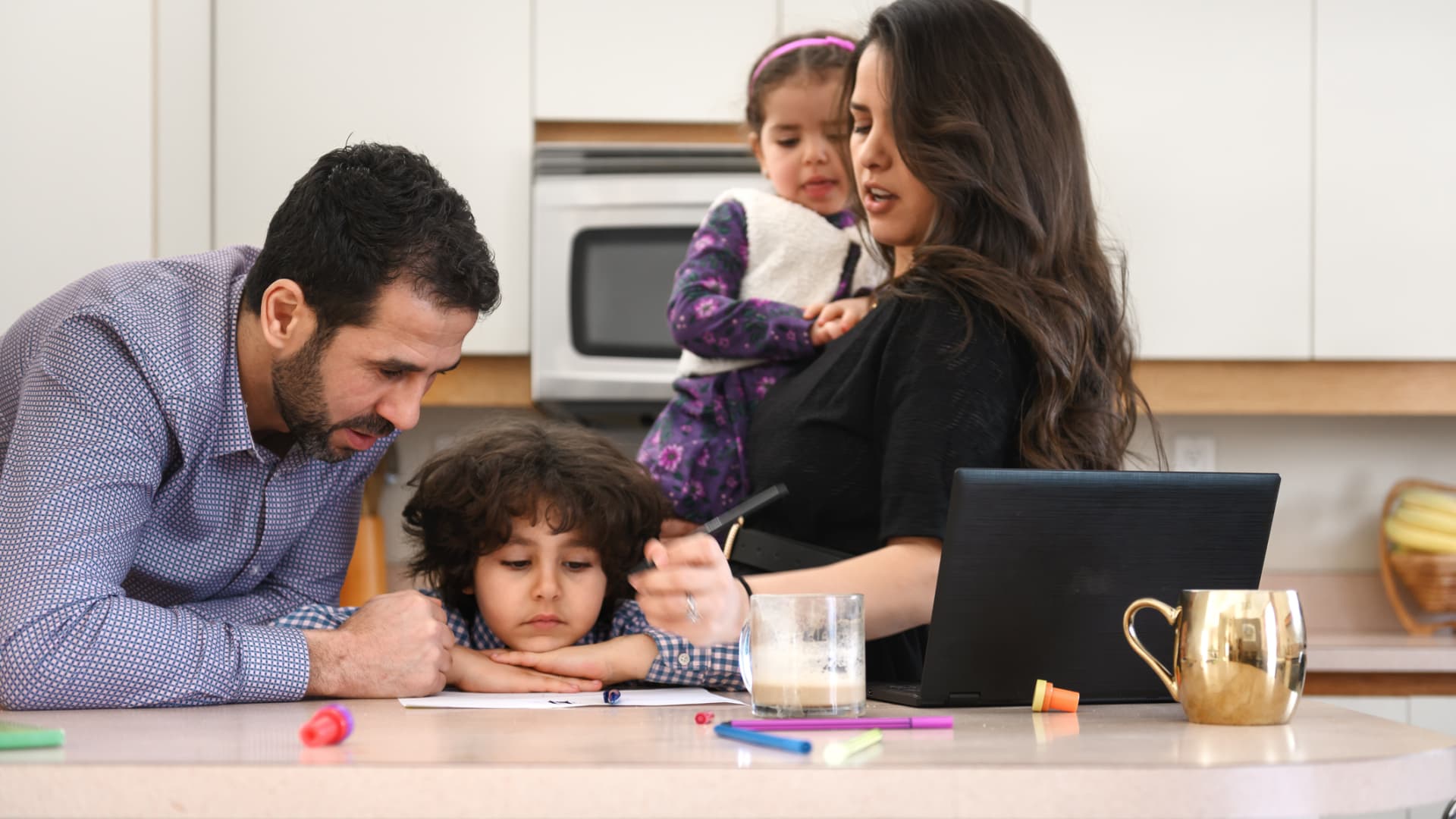Without the child tax credit, Stormy Johnson has been skipping her own meals so her kids can eat.
Johnson, 45, works as a student support specialist in Preston County Schools in Kingwood, West Virginia. Before the monthly enhanced child tax credit payments lapsed in December, she received an additional $500 each month for her two children, Violet, 15, and Tristan, 14, whom she parents alone.
Without the extra money, and with increased prices due to inflation, Johnson’s budget is stretched thin.
More from Invest in You:
Choosing a health plan that fits your budget and life
3 ways retirees can better cope with inflation
How to buy more than $10K in government I bonds
“It’s been a struggle for sure,” said Johnson. “I’m just making sure that my kids have what they need, and I honestly think it’s taken a toll on my health physically.”
Families struggling
The child tax credit was expanded in 2021 through President Joe Biden’s American Rescue Plan.
The legislation boosted the credit to $3,000 from $2,000, with a $600 bonus for kids under the age of 6 for the 2021 tax year. Half of the credit was delivered in monthly payments, which ran from July 2021 to December 2021, in deposits of $300 for children under the age of 6 and $250 for those aged 6 to 17. Families received the second half of the credit in a lump sum when they filed taxes this year.
Now, five months after payments stopped, many families are struggling to make ends meet.
Nearly half of parents who used to get the checks now say they can’t afford enough food to feed their families, according to a May survey of 500 parents from Parents Together Action, a nonprofit. In addition to the increased costs of food, families are noticing rising prices of gasoline, child care and rent due to inflation, the survey showed.
More than 90% said that they are finding it harder to make ends meet right now, and more than 60% are struggling to satisfy their families’ basic needs. Beyond cutting back on things, most families said they’ve stopped saving for the future and have tapped into their emergency savings to stay afloat.
Others, like Johnson, have skipped meals so their kids can eat. Her family has also had to cut back on foods like chicken and fresh vegetables because they are too expensive, she said.
“I know I need to take care of myself to be able to take care of my kids,” said Johnson. “But at any given time if you give me the option to do for my kids or do for myself, especially when it comes to something like food, I’m not going to let my kids go without.”
The future of the child tax credit
It’s unclear if the child tax credit will be enhanced again anytime soon.
The monthly payments ended in December when Democrats failed to pass Biden’s $1.75 trillion economic plan, Build Back Better. Since, there’s been little movement on reinstating the credit, even as families continue to grapple with the coronavirus pandemic, high inflation and increased economic uncertainty.
“It feels totally inexcusable that Congress isn’t acting to reinstate those CTC payments, especially right now as families are struggling so much,” said Allison Johnson, campaigns director at Parents Together Action.
It’s also likely that the benefits seen from the enhanced credit will continue to erode. The expanded benefit showed positive results in improving food security for families with children, lifting kids out of poverty and even helping parents work more.
Without the benefit, it’s been estimated that 10 million children will fall back into poverty.
SIGN UP: Money 101 is an 8-week learning course to financial freedom, delivered weekly to your inbox. For the Spanish version Dinero 101, click here.
CHECK OUT: 74-year-old retiree is now a model: ‘You don’t have to fade into the background’ with Acorns+CNBC
Disclosure: NBCUniversal and Comcast Ventures are investors in Acorns.
